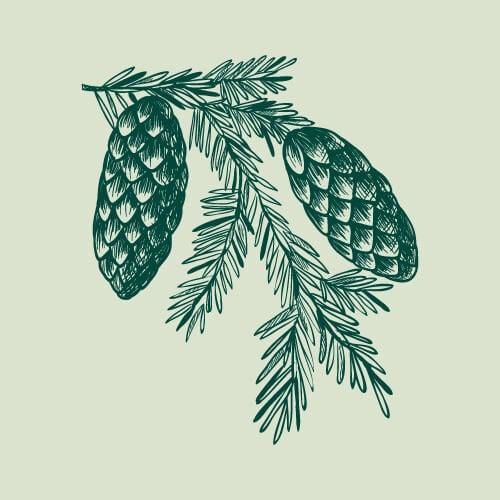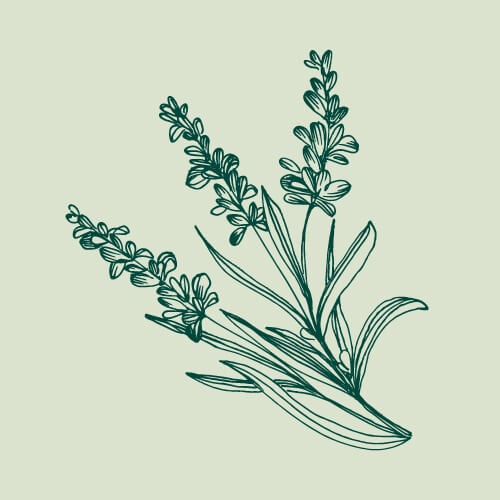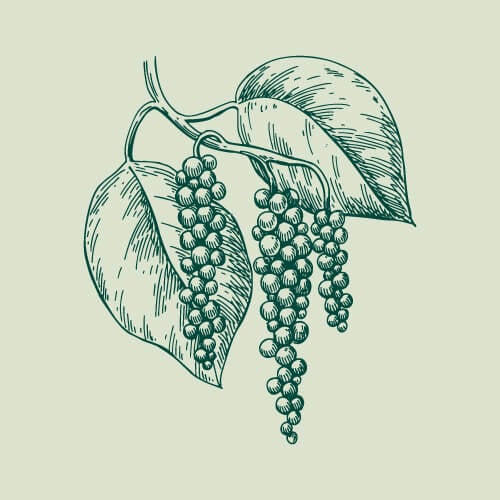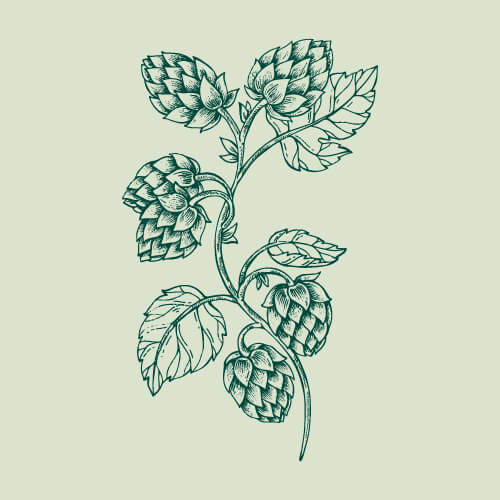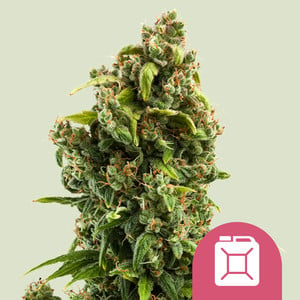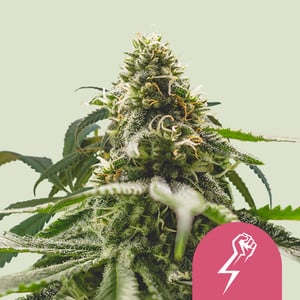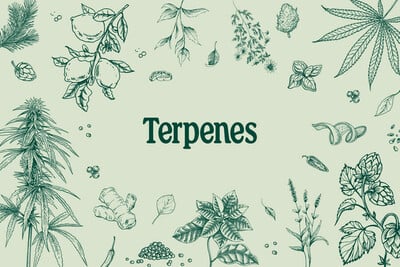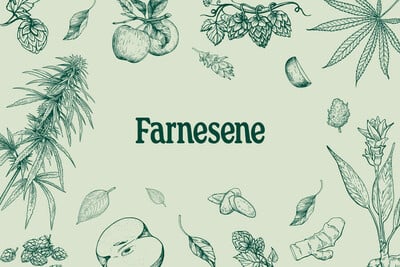.

Ocimene: Flavours, Effects, and Research
Cannabis produces well over 100 unique terpenes, yet only a handful receive most of our attention. So, let us introduce you to one of the more obscure aromatic components in weed strains: ocimene. This minor terpene doesn't show up in large concentrations, but it still plays an important role in the flavours and effects of some strains.
Contents:
You’ve heard of pinene and you’re familiar with myrcene. But the world of cannabis terpenes goes much deeper than these two aromatic constituents. Below, you’re going to learn everything you need to know about ocimene—a minor terpene with huge potential. Find out how this often-overlooked molecule influences the aromas and flavours of certain strains, and how it impacts the effects of the herb.

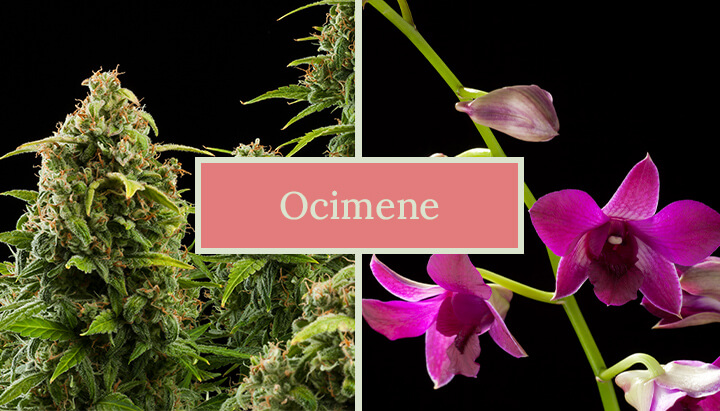
The Chemistry of Ocimene
Before we explore the specific chemistry of ocimene, it’s helpful to understand the general chemistry of terpenes themselves. These aromatic molecules occur widely in nature, are made up of smaller building blocks known as isoprene units. These simple structures consist of five carbon atoms and eight hydrogen atoms, with a chemical formula of C₅H₈.
Isoprene units link together through either head-to-tail or tail-to-tail connections to form larger structures—terpenes. Indeed, these compounds are grouped together depending on how many isoprene units they possess. Monoterpenes, the smallest of this chemical class, contain just two isoprene units, whereas sesquiterpenes contain three, diterpenes contain four, and triterpenes contain six.
As a monoterpene, ocimene consists of two isoprene units and a total of 10 carbon atoms. It features a chemical formula of C₁₀H₁₆ and occurs in two different isomers: α-ocimene and β-ocimene. These two molecules feature the same formula but differ in the arrangement of their atoms. Volatile in nature, ocimene has a low evaporation point, making it a volatile cannabis constituent.
Compared to several other terpenes, ocimene occurs in small amounts in cannabis plants. However, this molecule also shows up elsewhere in the plant kingdom, including in basil, mint, lavender, orchids, hops, mango, pepper, tarragon, and bergamot.
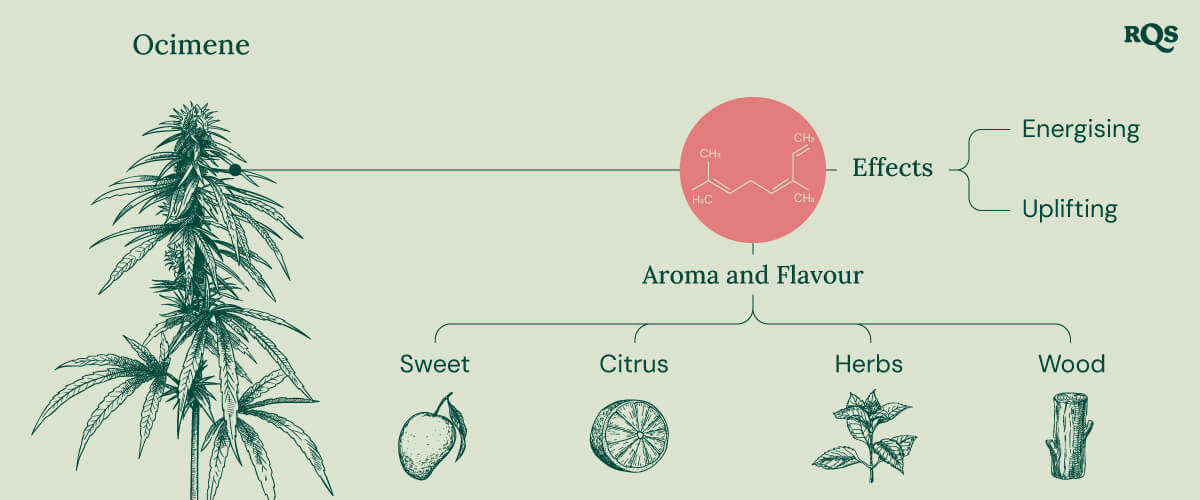
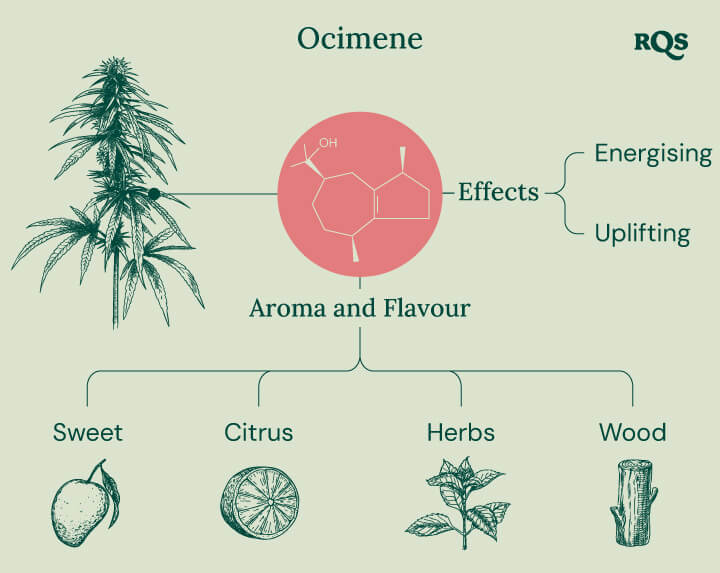
Aroma and Flavour of Ocimene
Although ocimene only occurs in minor concentrations in certain cannabis strains, the sheer pungency of this terpene means that it still contributes significantly to their flavour and aroma profiles. This aromatic molecule lends aromas of sweetness, fruit, herbs, wood, and citrus to certain cultivars, as well as flavours of earth, citrus, and freshly cut herbs. Cannabis strains that contain ocimene are often described as refreshing and considerably complex when it comes to their scent and taste.
Effects Associated With Ocimene in Cannabis
Ocimene doesn’t just contribute to the flavours and aromas of select weed strains. Much like other terpenes, the molecule also has a direct influence on the subjective effects. Overall, ocimene steers the high in an energising, cerebral, and uplifting direction, contributing to what some would traditionally call a “sativa” experience. While research is lacking, it’s likely that ocimene, much like some of the major terpenes found in cannabis, either influences the endocannabinoid system directly or impacts how cannabinoids such as THC interact with this body-wide signalling network.
Ocimene: A Look at the Research
Researchers are extremely interested in studying naturally occurring compounds, including terpenes, as potential therapeutics in the management of certain diseases.
Ocimene has captured the attention of research teams around the world, who have pitted the terpene against models of different conditions, including inflammation and fungal pathogens. However, the studies surrounding this terpene remain in the preclinical stages; we simply don’t know how effective ocimene is at addressing these conditions in humans just yet.
-
Inflammation
Inflammation plays a vital role in human physiology, particularly when it comes to combating infections and healing injuries. However, chronic inflammation caused by modifiable factors such as diet and environmental toxins contributes to many modern diseases, and has become a serious public health issue.
With this in mind, a research term from Mahidol University, Thailand tested[1] both ocimene-rich lesser galanga essential oil and isolated β-ocimene on human immune cell lines. They found lesser galanga essential oil to significantly inhibit cyclooxygenase-2 (COX-2) and prostaglandin E2 (PGE2)—two important biomarkers for inflammation. They then isolated β-ocimene and found it to produce a similar effect. They concluded that the “essential oil of lesser galanga and its major compound could be potentially developed as anti-inflammatory agents”.
-
Apoptosis
Apoptosis describes a relatively simple biological action—programmed cell death. You see, all the cells in your body will eventually die. When their time comes, either through natural ageing or injury, they’ll essentially carry out controlled cellular suicide. This tightly regulated process results in the destruction of problematic cells, maintaining balance within bodily tissues. As you can imagine, problems occur when this mechanism fails. Cancer cells, for example, employ a range of strategies to evade apoptosis, allowing them to linger and spread. Therefore, researchers continue to test compounds that could drive apoptosis in cancer cells in hopes of tackling the disease.
A 2022 study[2] published in the Canadian Journal of Physiology and Pharmacology tested a range of terpenes for their anti-cancer potential against a treatment-resistant model of breast cancer. They found several individual terpenes and combinations of molecules to produce favourable results, including a pairing of kaempferol with ocimene.
-
Antifungal
When it comes to infections, most people think of viruses and bacteria. However, certain types of fungi can also cause big problems in the human body when left unchecked. Candida albicans, for example, can cause a range of unpleasant symptoms, including oral thrush, skin infections, and fever. A range of antifungal medications are available to counter the pathogen, and now researchers are turning to terpenes as another possible solution.
A study[3] published in the journal Advances in Microbiology tested several plant molecules, including the terpenes ocimene and farnesene, on different Candida strains. The authors of the paper documenting the study stated, “Our study showed that all the five plant molecules tested exhibited excellent activity against planktonic growth and morphogenesis”.
Ocimene: An Emerging Cannabis Terpene
Ocimene only occurs in small concentrations in certain cannabis strains. While often overlooked compared to major terpenes such as pinene and myrcene, ocimene still contributes distinct flavours, aromas, and effects to the cannabis experience. Aside from its refreshing notes, the molecule adds a cerebral and energising effect to select cultivars. On top of these effects, emerging research indicates that ocimene could have future clinical applications.
Cannabis Strain High in Ocimene
Now that you’re all clued up about ocimene, you’re likely raring to experience this terpene in all its glory. If so, we’ve got just the strains for you! Check out the four ocimene-rich varieties below to get your fix!
Sour Diesel
The ocimene terpene shows up in relatively high concentrations in Sour Diesel buds! Germinate seeds using the paper towel method and transplant directly into 15–20 l containers. Expect indoor plants to grow to 90–130 cm by the end of veg depending on any training techniques used; their outdoor counterparts will peak at around 150 cm. Defoliate well at the start of bloom to keep the canopy airy and well-lit. Indoor plants will stretch up to 160 cm, with outdoor specimens topping out at an impressive 200 cm. Prepare to harvest up to 525 g/m² indoors after a flowering phase of 10–11 weeks, and 550–600 g/plant from outdoor specimens during late October.
You’ll get a real sense of ocimene’s tastes and effects after curing these buds. Paired with a THC content of 19%, you’ll enjoy a clear-headed and creative high alongside moreish flavours of citrus, fruit, and herbs.
Sour Diesel
|
|
Original Diesel x (Northern light x Shiva x Hawaiian) |
|
|
475 - 525 gr/m2 |
|
|
90 - 160 cm |
|
|
10 - 11 weeks |
|
|
THC: 19% |
|
|
Sativa 70% Indica 30% |
|
|
550 - 600 gr/plant |
|
|
150 - 200 cm |
|
|
Late October |
|
|
Clear, Physically Relaxing |
Green Crack Punch
The offspring of Green Crack and Purple Punch, Green Crack Punch offers rewarding yields and fruity flavours. Sow seeds into 10 cm pots and transplant them into their final containers once they reach a height of around 5–7 cm. Apply LST during week three to keep plants more compact, and transplant any specimens outdoors during this point if that’s your goal. Indoor plants will grow to 90–120 cm by the end of veg, having formed a dense canopy with many bud sites. Outdoors, plants will surge up to around 180 cm.
During bloom, expect indoor plants to stretch up to 140–160 cm, with their outdoor counterparts peaking at a towering 220 cm. Indoor plants offer a rewarding return of up to 500 g/m² after a flowering phase of 8–9 weeks, whereas outdoor specimens will treat you to 550–600 g/plant. After drying and curing these buds, brace yourself for a euphoric and revitalising high alongside flavours of citrus, fruit, and herbs.
Green Crack Punch
|
|
Green Crack x Purple Punch |
|
|
450 - 500 gr/m2 |
|
|
90 - 160 cm |
|
|
8 - 9 weeks |
|
|
THC: 18% |
|
|
Sativa 60% Indica 40% |
|
|
550 - 600 gr/plant |
|
|
180 - 220 cm |
|
|
Late September |
|
|
Calming, Euphoric |
Strawberry Cough
This sativa-dominant powerhouse descends from legendary parent strains Strawberry Fields and Haze. Sow Strawberry Cough seeds in cell trays and transplant them into their final containers once they reach a height of 3 cm. During veg, they’ll transition from stout seedlings into slender specimens equipped with long internodes and luscious fan leaves. Top and train your plants during week three of veg to keep them shorter, or leave them untrained if you’re after bulky central colas. By the time bloom swings around, indoor plants will have grown to 80–100 cm, with outdoor plants reaching 100–160 cm.
It doesn’t take long for pleasant odours of candy, fruit, herbs, and blueberry to permeate the air during bloom. After a flowering phase of 9–10 weeks, you’ll pull in up to 500 g/m² from indoor plants of around 150 cm in height. Outdoors, plants will top out at 200 cm and produce up to 650 g/plant ready to harvest during early October. Enjoy the motivating and uplifting experience that this high-ocimene strain has to offer!
Strawberry Cough
|
|
Strawberry Fields x Haze |
|
|
450 - 500 gr/m2 |
|
|
100 - 150 cm |
|
|
9 - 10 weeks |
|
|
THC: 20% |
|
|
Sativa 75% Indica 25% |
|
|
600 - 650 gr/plant |
|
|
160 - 200 cm |
|
|
Early October |
|
|
Calming, Motivating , Uplifting |
Mimosa
Inducing a creative and laughter-filled high, Mimosa descends from parent strains Clementine and Purple Punch, and comes bearing high levels of ocimene. Sow these seeds directly in 11 l pots and watch them form compact and stealthy canopies throughout veg. Without training, indoor plants will grow to just 60 cm before bloom, while those grown outside will peak at 80 cm.
Expect indoor specimens to stretch to 80 cm during bloom, with outdoor plants peaking at 100 cm. Prepare to watch this strain’s small pre-flowers quickly unfurl into frosty and dense purple-green buds. Feed them well, and indoor plants will produce 350–400 g/m² after a brief flowering time of 9–10 weeks. If you grow this variety outdoors, prepare to pull in up to 550 g/plant during the middle of October. Get ready to enjoy flavours of earth and herbs alongside an uplifting THC content of 22%.
Mimosa
|
|
Clementine x Purple Punch |
|
|
350 - 400 gr/m2 |
|
|
60 - 80 cm |
|
|
9 - 10 weeks |
|
|
THC: 22% |
|
|
Sativa 70% Indica 30% |
|
|
500 - 550 gr/plant |
|
|
80 - 100 cm |
|
|
Middle of October |
|
|
Creative, Laughter |
- Abstract of In vitro Anti-inflammatory effects of thai herb essential oils https://pharmacy.mahidol.ac.th
- Anti-cancer potential of cannabis terpenes in a Taxol-resistant model of breast cancer - PubMed https://pubmed.ncbi.nlm.nih.gov
- Effects of Cinnamaldehyde, Ocimene, Camphene, Curcumin and Farnesene on Candida albicans https://www.scirp.org


























